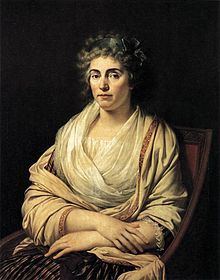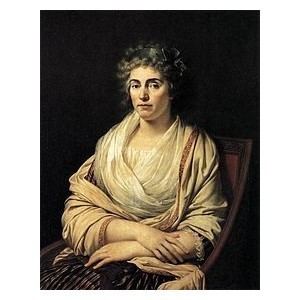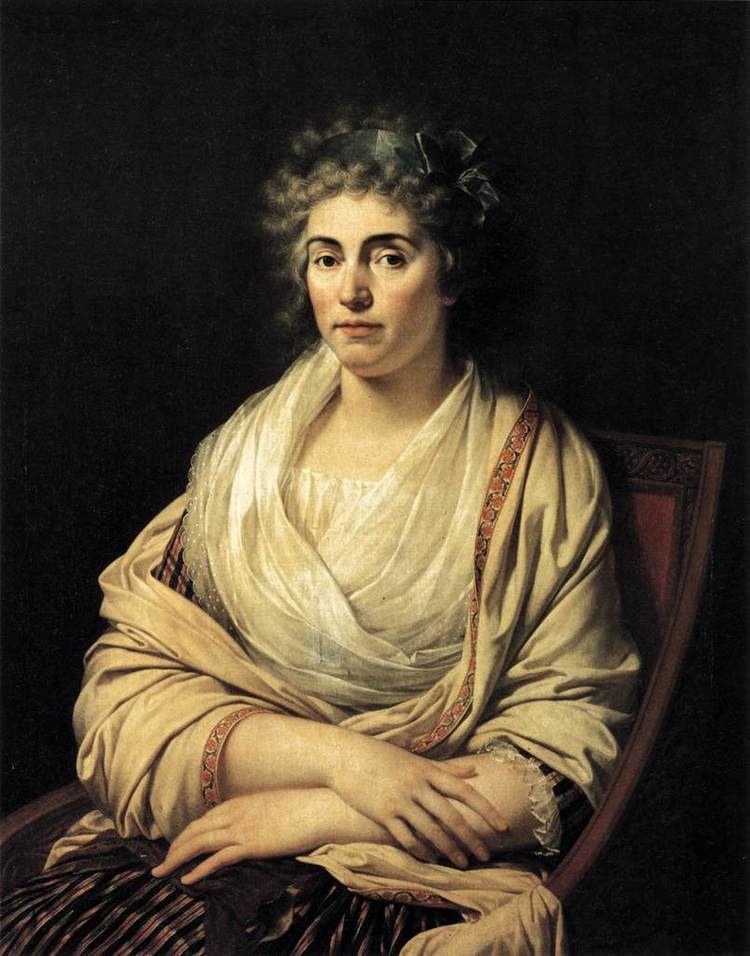Name Princess of | House House of Stuart | |
 | ||
Similar People Charles Edward Stuart, Charlotte Stuart - Duchess, Maria Clementina Sobieska, James Francis Edward S, Henry Benedict Stuart | ||
Princess Louise Maximilienne Caroline Emmanuele of Stolberg-Gedern (20 September 1752 – 29 January 1824) was the wife of the Jacobite claimant to the English and Scottish thrones Charles Edward Stuart. She is commonly called Countess of Albany.
Contents

Birth and early life

Louise was born in Mons, Hainaut, in the Austrian Netherlands (now Belgium), the eldest daughter of Prince Gustav Adolf of Stolberg-Gedern and of his wife Princess Elisabeth of Hornes, the daughter of Maximilian, Prince of Hornes. When she was only four years old, her father was killed at the Battle of Leuthen. When she was seven, she was sent to be educated at the school attached to the convent of St. Waudru in Mons. The mission of this convent was to provide a home for young ladies of the nobility who had insufficient financial means to live unmarried in the world. In 1766 the Empress Maria Theresa arranged for the convent to give to Louise one of its endowed prebends. Although technically Louise was a canoness (a type of nun), she was not required to stay in the convent cloister and was still allowed to travel in society. Indeed, for most of the canonesses, the acceptance of a prebend was merely a temporary stage until they found appropriate noble husbands.
Marriage
In 1771 Louise's younger sister (also a canoness at St. Waudru) married the Marquess of Jamaica, only son of the 3rd Duke of Berwick (great-grandson of King James II of England and VII of Scotland). The Duke of Berwick's uncle, the duc de Fitz-James, began negotiations with Louise's mother for a marriage between Louise and Charles Edward Stuart, the Jacobite claimant to the English and Scottish thrones. Although King Louis XV of France recognised the succession of the House of Hanover, he also hoped that the legitimate Stuart line would not die out and would be an ongoing threat to the Hanoverians.
The negotiations were delicate since Louise's family had no money of its own and relied totally on the goodwill of the Empress Maria Theresa (who was allied to the Hanoverians). On 28 March 1772 Louise was married by proxy to Charles Edward at Paris. The couple met for the first time on 14 April 1772 when they renewed their marriage vows in person in the town of Macerata, Italy. Louise was henceforward recognised by Jacobites as Queen Louise of England, Scotland, France, and Ireland.
Charles and Louise spent the first two years of their married life in Rome. In spite of the difference in their ages (he was 52, she was 20), the couple were at first happy together. But there were several shadows on the relationship. There was no sign of Louise conceiving a child. Charles had been encouraged in the belief that, if he married, the pope would recognise him as King of England and Scotland, and France might provide funds for another Jacobite rising. Louise had virtually been promised that she would be treated as a queen. Instead Charles found his hopes both of a son and of diplomatic recognition disappointed, while Louise found herself married to an old prince with no prospects.
Count Vittorio Alfieri
In 1774 Charles and Louise moved to Florence. It was there that they began to use the title "Count and Countess of Albany". In 1776 the Italian poet Count Vittorio Alfieri was presented at their palace; he became a frequent visitor. In Rome Louise had had several young men pay court to her, but these relationships had probably not been adulterous. But sometime in 1778 Louise and Alfieri became lovers.
Meanwhile, Louise's husband Charles had become a drunkard again as he had been a number of years before. In December 1780 Louise left Charles and took refuge in a convent. She claimed, and it is widely believed to be true, that Charles had become physically abusive to her. Louise received the support of the Grand Duchess of Tuscany, the pope, and her brother-in-law the Cardinal Duke of York, all of whom were unaware of Louise's ongoing adulterous relationship with Alfieri.
Within a few weeks Louise moved back to Rome. She lived briefly at the Ursuline Convent before moving to her brother-in-law's official residence, the Palazzo della Cancelleria. Alfieri followed Louise to Rome where for two years they carried on their affair in secret. In April 1783 the Cardinal Duke of York finally discovered the truth. In early May Alfieri left Rome in order to avoid being expelled by force.
In April 1784 Charles was induced by King Gustav III of Sweden to grant Louise a decree of separation. The couple did not divorce (since no such legal procedure existed in the Papal States), but Louise was thereby permitted to live separately from her husband.
In June 1784 Louise left Rome, purportedly to summer at the baths of Baden. In August she was reunited with Alfieri at Colmar. They spent the next two months together at the castle of Martinsburg. In order to continue to keep their meeting secret from the Cardinal-Duke of York (who was the chief source of Louise's income), they separated again, and Louise spent the winter of 1784/1785 in Bologna. She summered in Paris, before returning to Martinsburg where she was joined again by Alfieri in September. After two months Louise returned to Paris.
In 1786 the Cardinal-Duke of York learnt of the ongoing relationship between Louise and Alfieri. This caused a complete rupture between Louise and her brother-in-law. Henceforth she made no attempt to hide her relationship with Alfieri. From December 1786 onwards they lived together as a couple with only occasional and brief separations.
On the last day of January 1788, Louise's husband Charles died. This resulted in a substantial improvement in her financial situation thanks to a previously agreed pension from the King of France. Although Louise now had the freedom to marry Alfieri, they did not regularise their relationship, since Alfieri had always opposed the institution of marriage. They lived at first in Paris. There Louise established a famous salon in her home to which the most important writers, artists, and intellectuals were invited.
In 1791 Louise and Alfieri paid a four-month visit to England. In 1792 the 10th of August insurrection encouraged them to flee from Paris, only two days before the republican authorities went to their home to arrest them.
Louise and Alfieri settled in Florence. In 1793 Alfieri purchased Palazzo Gianfigliazzi, a mansion overlooking the River Arno. Here Louise re-established her famous salon, although perhaps on a somewhat smaller scale than in Paris.
Louise continued to live with Alfieri until his death in 1803.
Later life
After Alfieri's death Louise's companion was the artist François Xavier Fabre. It seems unlikely that their relationship was a romantic one. Louise continued to live in Florence until in 1809 she was summoned to Paris by Napoleon during France's war with Britain. He asked if she had ever given birth to Charles Edward's child, hoping to find a legal heir who could then be used to cause insurrection in Britain. When she replied "no", the meeting was abruptly terminated. A year later she was allowed to return to Florence.
Louise is buried in the Basilica di Santa Croce in Florence (in the Castellani Chapel); Alfieri is also buried in the basilica (between the tombs of Machiavelli and Michelangelo).
